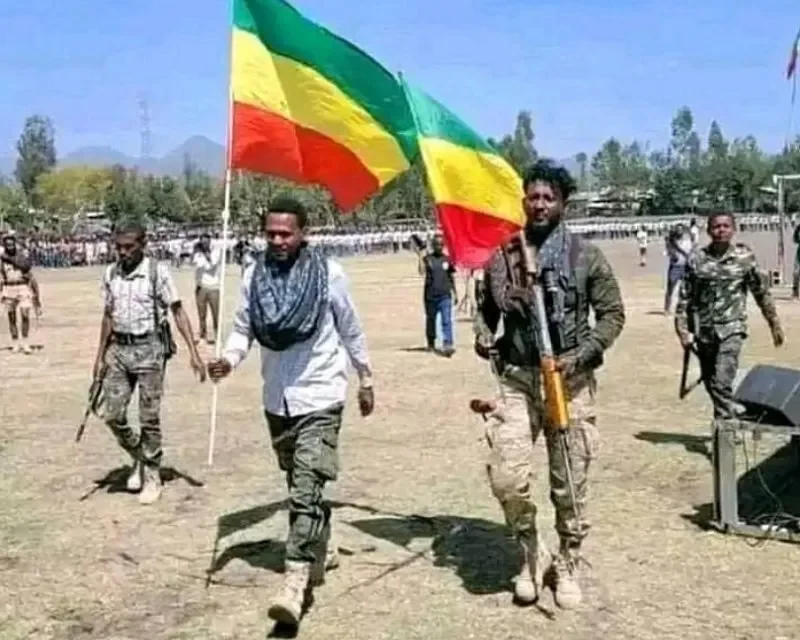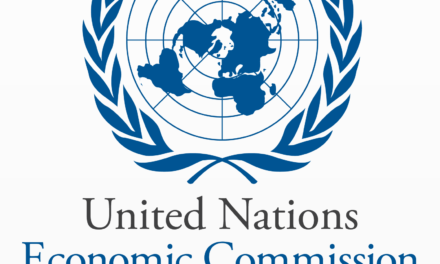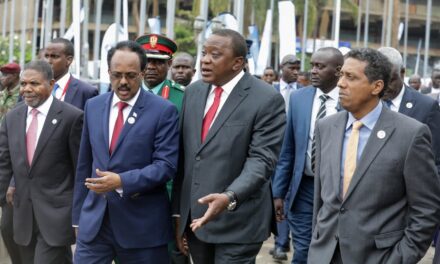By: Biruk Haregu (PhD student in Public Policy and Political Economy, and a Pre-Doctoral Fellow at James Madison University in the U.S.)
Ethiopia finds itself, yet again, engulfed in political turmoil and armed conflict. What is currently unfolding in Ethiopia’s Amhara region is a full-fledged civil war instigated and orchestrated by Abiy Ahmed. Merely ten months after reaching a Cessation of Hostilities Agreement that ostensibly brought a devastating civil war between the Abiy regime and the Tigray People’s Liberation Front (TPLF) to an end, Abiy has once again deployed the federal military into Northern Ethiopia and ignited a second civil war. This time in Ethiopia’s Amhara region— Ethiopia’s second most populous.
The anatomy of Abiy’s new civil war
The Amharas have been facing ethnic persecution for more than three decades. And such persecution of Amharas has further intensified since Abiy came to power. And the latest civil war waged by Abiy against the Amharas is precipitated by an attempt to disarm regional special forces. In theory, Abiy claims that his objective is to integrate regional special forces into the federal army and local police forces — an objective presumably intended to be implemented throughout Ethiopia. In practice, however, Abiy is attempting to consolidate power by disarming and demobilizing Amhara forces that he considered a threat to his power and as a way of consolidating his newfound alliance with his former foes in Tigray. Hence, his particular focus on the Amhara region and the very people he had considered his major support base during the war in Tigray.
In this period of heighted insecurity and mistrust throughout Ethiopia, if Abiy’s goal was genuine security sector reform, he could have established an independent, credible, and verifiable mechanism to facilitate such a process. But there was no such mechanism or credible process. Moreover, there is no indication that regional special forces or armed groups of any region within Ethiopia are being disarmed and demobilized, including the TPLF and Oromo Liberation Army— armed groups which waged war against federal forces. For instance, new reports are emerging of Oromo special forces attacking residents in the town of Awra Godana in the Amhara region.
Which begs the questions: why not have a transparent, verifiable, and credible process for Abiy’s stated objectives? Moreover, why the specific targeting of the Amhara region and its forces? The same forces that Abiy has numerously praised as having saved the Ethiopian National Defense Forces (ENDF) when it was attacked by TPLF’s “preemptive strike” on November 3, 2020.
For close and discerning observers of Ethiopian politics, it is increasingly evident that Abiy’s principal objective is power consolidation through the complete disarmament and demobilization of the Amhara regional forces and by extension the Amhara region— a force and region that he fears is a threat to his authoritarian inclinations. Unsurprisingly, the haphazard and unjust policy decree has been met with a widespread popular resistance movement and insurgency throughout the Amhara region. Amharas view the deployment of federal forces into the region as an attempt to subjugate the people and the region to the whims of Abiy and his Oromo Prosperity Party; while at the same time, exposing the region and its people to security threats emanating from other armed groups, namely the TPLF, Oromo special forces, and Oromo Liberation Army.
Abiy’s abysmal failure in leadership
To date, much of the analysis of the ongoing civil war frames the conflict as one between the Abiy regime and the Amhara special forces and Fano. This is an oversimplification. At its core, the principal resistance Abiy faces is from the Amhara population and more broadly citizens throughout the country. A confluence of factors has fueled widespread discontent, including the devastating civil war in Tigray that killed more than 600,000 citizens, ethnic polarization, ethnic violence and forced displacement, economic mismanagement, rising poverty, inflation, a chronic foreign exchange shortage, drought, public sector corruption, and an administrative system attempting to institute an Oromo ethnic hegemony. These factors coupled with an inability and unwillingness to address the myriad challenges effectively has forced citizens to reject and resist the Abiy regime.
For instance, a critical area that illustrates both the callousness and lack of capacity of the Abiy regime is the economy. Abiy’s ceaseless military adventurism continues to shock an already fragile Ethiopian economy. This has resulted in a disruption in the flow of goods and services, persistently high inflation, and increasing poverty across all regions of Ethiopia— a far cry from Abiy’s incessant “Prosperity” and “reform” rhetoric. Furthermore, the widespread public sector corruption— in construction, mining, and procurement— has fueled accusations of nepotism and kleptocracy in levels unseen in recent times.
In short, the chaos and instability plaguing Ethiopia emanates from Abiy’s tyranny and abysmal failure in leadership. Consequently, citizens in the Amhara region and beyond are raising legitimate demands for their fundamental rights and liberties, including freedom, justice, rule of law, equality, accountability, agency, dignity, and human rights. In a futile attempt to consolidate power and squash the legitimate demands of citizens, Abiy has deployed the military under the false pretenses of “integrating” regional special forces into federal institutions. This approach will prove a failure.
Persecution of Amharas and their struggle for freedom and justice
While Ethiopia has a long history of ethnic and religious harmony, ethnic tensions began to consume Ethiopian society with the rise to power of the TPLF-led Ethiopian People’s Revolutionary Democratic Front (EPRDF) and their ill-fated implementation of an ethnic federalist constitution in 1994. Ethnic federalism enshrined ethnicity and identity politics as the central organizing principle of Ethiopian politics— and indeed, the administrative state. Furthermore, in this divisive system, Amharas were erroneously and unjustly targeted as oppressors during Ethiopia’s monarchical period; and thus, ostracized, marginalized, and persecuted. This marginalization and persecution of Amharas continues unabated.
Since the ascension to power of Abiy in 2018, Amharas have faced persistent and widespread ethnic persecution and violence, forced displacement, and ethnic cleansing. While the epicenter for these ethnic pogroms against Amharas is the Oromia region; shockingly, it has recently extended to the Ethiopia’s capital city Addis Ababa. Numerous clear and documented instances of ethnic-based persecution of Amharas are evident.
First, approximately 1 million Amharas have been ethnically cleansed out of Oromia region, at the hands of the Oromo Liberation Army, accounting for roughly 20% of Ethiopia’s 5 million Internally Displaced Persons. Second, there is a widespread government sanctioned demolition of homes belonging to Amharas around Addis Ababa. While the Abiy regime claims it intends to build a new city called “Sheger”, documented evidence suggests that the homes being destroyed belong to ethnic Amharas with the principal objective of demographic engineering in and around Addis Ababa.
In other words, the regime is actively working to ethnically cleanse Amharas from Addis Ababa— a city which has historically had majority Amhara residents. Third, there is a travel ban against Amharas, particularly men and university students, encumbering their entrance into Addis Ababa. Amharas attempting to enter Addis Ababa are routinely harassed and detained by the Oromo Liberation Army, Oromo special forces, and the federal authorities and their families are asked to pay ransom. Fourth, throughout Addis Ababa, Amharas are being arbitrarily detained and imprisoned without due process in makeshift prisons. There are reports of cholera outbreaks in these prisons, in what the Amhara Association of America has characterized as makeshift concentration camps.
Furthermore, upon declaring a state of emergency on August 4, 2023, the Abiy regime has placed the Amhara region under military command posts, and shutoff the internet and phone lines. As a result, according to the Ethiopian Human Rights Commission, within the context of the conflict, the Abiy regime is: i) targeting innocent Amhara civilians; ii) carrying out extrajudicial killings of Amharas; and iii) arbitrary detaining Amhara civilians without due process.
Similarly, UN human rights experts have found that the Abiy regime is committing significant violations against civilians in the Amhara region, including drones strikes that killed innocent civilians including women and children. For example, on August 14, 2023, a drone strike in the town of Finot Selam killed 26 civilians and injured 55 others. While, on September 17, 2023, two additional drone strikes were reported to have killed “at least 30 civilians.” This illustrates a pattern of brutality and inhumanity that can only be categorized as state-sponsored violence and persecution against Amharas. Consequently, the regime’s brutality has further alienated citizens and undermined any notions of legitimacy. Rather than vanquish the resistance, however, Abiy’s war of aggression is likely to strengthen the resolve of the popular resistance movement spreading through the Amhara region like wildfire.
In sum, the targeting and persecution of Amharas has been a feature of the Abiy regime, both through its social and military policy. The systematic state-sponsored violence and ethnic cleansing of Amharas coupled with Abiy’s deployment of the military into the Amhara region on false pretenses has led to the emergence of the Amhara popular resistance movement and its forces, the Amhara Fano— a popular resistance movement, with a just cause, that will continue to gain momentum and support.
Fundamentally, Fano’s struggle has essentially become the people’s movement for freedom, justice, and human rights. And as Abiy and his generals are quickly discovering, such a movement has become incredibly difficult to diffuse. Unfortunately, Abiy’s intransigence and maniacal reliance on military force is likely lead to further gross human rights violations and induce a humanitarian catastrophe once more.
The way forward
It is increasingly evident that Abiy’s regime is crumbling under the moral and political weight of concerned citizens and their power. This process is being hastened by the strident advances being made by Fano and Amhara Popular Forces. It is critical that both domestic and international stakeholders expeditiously take appropriate measures to manage this process and avoid a humanitarian catastrophe.
First and foremost, the Abiy regime must come to the realization that there is no military solution to an inherently political problem. As such, it is imperative to immediately cease using military force against civilians, including the ongoing mass detention of ethnic Amharas without due process, extrajudicial killings, and deployment of military drones against citizens— citizens that are raising legitimate demands for their rights and freedoms. Otherwise, buoyed by their just cause, the Amhara popular resistance and its forces will further continue to gain support and momentum. Consequently, there is significant risk that the Abiy regime’s destabilizing effect will result in a conflict induced humanitarian catastrophe that goes beyond Ethiopia and engulfs the entire Horn of Africa region.
Second, the regime’s attempt at ad hoc cosmetic “reforms” will not solve what is inherently a structural problem. What afflicts Ethiopian society is the lack of a credible and inclusive social contract rooted in equality, justice, and the rule of law. And the lack of such a social contract perpetuates identity politics, ethnic polarization and ethnic pogroms plaguing Ethiopia. To address this structural challenge, a genuine attempt at reforming the divisive ethnic federalist arrangement must be prioritized. To this end, a shift from ethnic federalism towards territorial or citizenship-based federalism remains paramount.
Third, Ethiopia needs a genuine, credible, and inclusive deliberative process to address the myriad challenges the country faces, including reforming the above mentioned divisive ethnic federalist constitution. While the Ethiopian National Dialogue Commission (ENDC) was initially envisioned to serve such a role, its independence and credibility have come into question. There are legitimate concerns that the ENDC is being used by Abiy as a political ploy that provides him with a semblance of legitimacy and political cover. This politicization of such a process will neither facilitate a genuine deliberative process nor lead to sustainable solutions.
Fourth, the Ethiopian diaspora must urgently come together— irrespective of ethnicity or affiliation— to pressure the Abiy regime. One thing is abundantly clear, Abiy’s thirst for power coupled with his tyranny is adversely impacting all Ethiopians. Therefore, a concerted and relentless pressure from the diaspora is required. To this end, economically, the diaspora must effectively cut off a key channel of foreign exchange earnings for the regime— remittances. Rather than socioeconomic development and poverty alleviation, the regime is using foreign exchange earnings to buy weapons and wage war against citizens. The diaspora has a moral responsibility to discontinue sending remittances to the regime. In that respect, the #ReRouteRemittance campaign is an important initiative that should be scaled-up.
Diplomatically, policy proposals put forth by the diaspora to foreign governments, international agencies, and allies should have a degree of consistency and uniformity. In this regard, all policy options must be on the table, including advocating for independent UN investigations into the human rights violations being committed in the Amhara region and across Ethiopia; the imposition of an arms embargo on the regime; and the Magnitsky sanctions program on key regime personnel is also critical.
Finally, the international community (IC), in particular the United States and the European Union have an auspicious window of opportunity to lean-in with democratic values and policies and effect change in Ethiopia by proactively supporting the popular movement for freedom, democracy, justice, and rule of law. To this end, there are several measures that the IC can take. First, the IC must play a far greater role in condemning and pressuring the Abiy regime to refrain from deploying military force against citizens and cease the gross human rights violations it continues to perpetrate, including extrajudicial killings, drone strikes against civilians, and arbitrary arrests and mass detentions without due process.
Second, a combination of economic and diplomatic pressure must be applied to further isolate the regime— this should be implemented both on the regime as well as key personnel. Third, considering Abiy’s use of heavy weaponry and drones against civilians and critical infrastructure, an arms embargo must be seriously considered. Similarly, the U.S. and E.U. must play a constructive role in pressuring Abiy’s suppliers of drones and other weapons— particularly the United Arab Emirates and Turkey— to stop their sponsorship. Finally, it is incredibly important that the UN conduct independent investigation into the systemic human rights violations directed against the Amhara and being perpetrated in the Amhara region and across Ethiopia. In addition to holding perpetrators accountable, the investigations will deter the Abiy regime from committing further atrocities. Immediate humanitarian assistance must also be extended to the Amhara region, which is concurrently experiencing conflict and drought induced food shortages.
The author, Biruk Haregu, is a PhD student in Public Policy and Political Economy, and a Pre-Doctoral Fellow at James Madison University in the United States.





